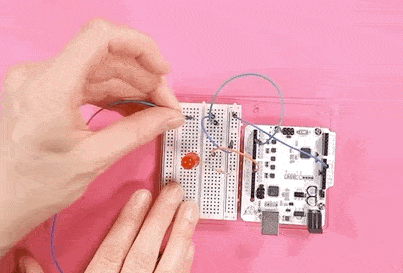Transcript
At this point you're practicing basic
Arduino skills and it might not feel too creative all the time. But in this
exercise you have a chance to do something different.
Invent your own switch or mechanism for turning on sounds or LED lights. The
switch doesn't have to be complicated: often the best ideas are super simple.
Start by thinking a few things over. What kind of an activity or movement could be
used for closing a circuit? What do you want to do? Do you want to detect if
someone's stolen your mobile, or left the door open? Try to find mechanisms that
move back and forth, open or twist something. You can hack them into a
switch of your own. Then make your own brand new switch with aluminum foil or
tape, conductive objects and whatever crafting materials you have at hand.
Connect your switch to the Arduino and test it with the doorbell program. Use
extension wires with the switch if needed. Change the Arduino program if it
doesn't do what you want. Maybe the buzzer should be quiet when
the switch is closed and only make sound if it's open. If you have time to
experiment a bit more you can also use LEDs instead of the piezo or use both
light and sound. Here's a few ideas you can try. You can make your own version of
one of these or create something completely new. Oh, and do share what
you've made with others, too!
